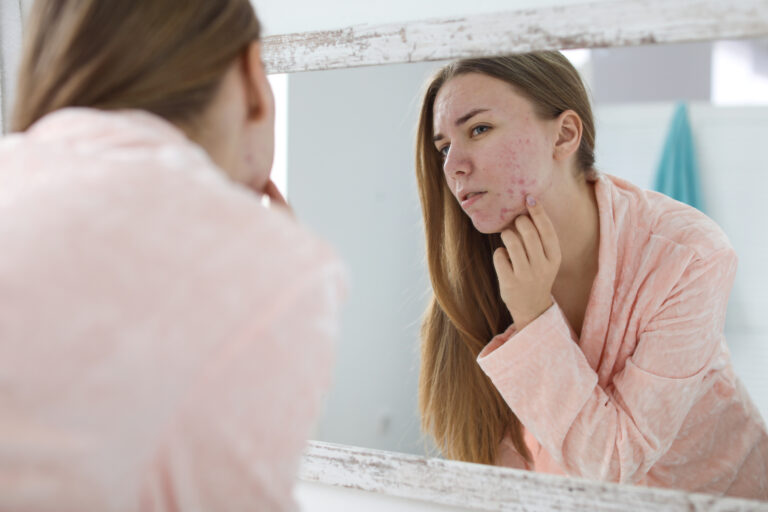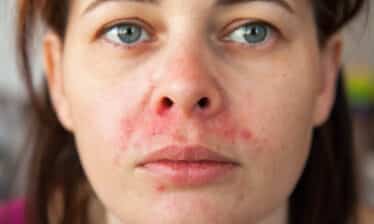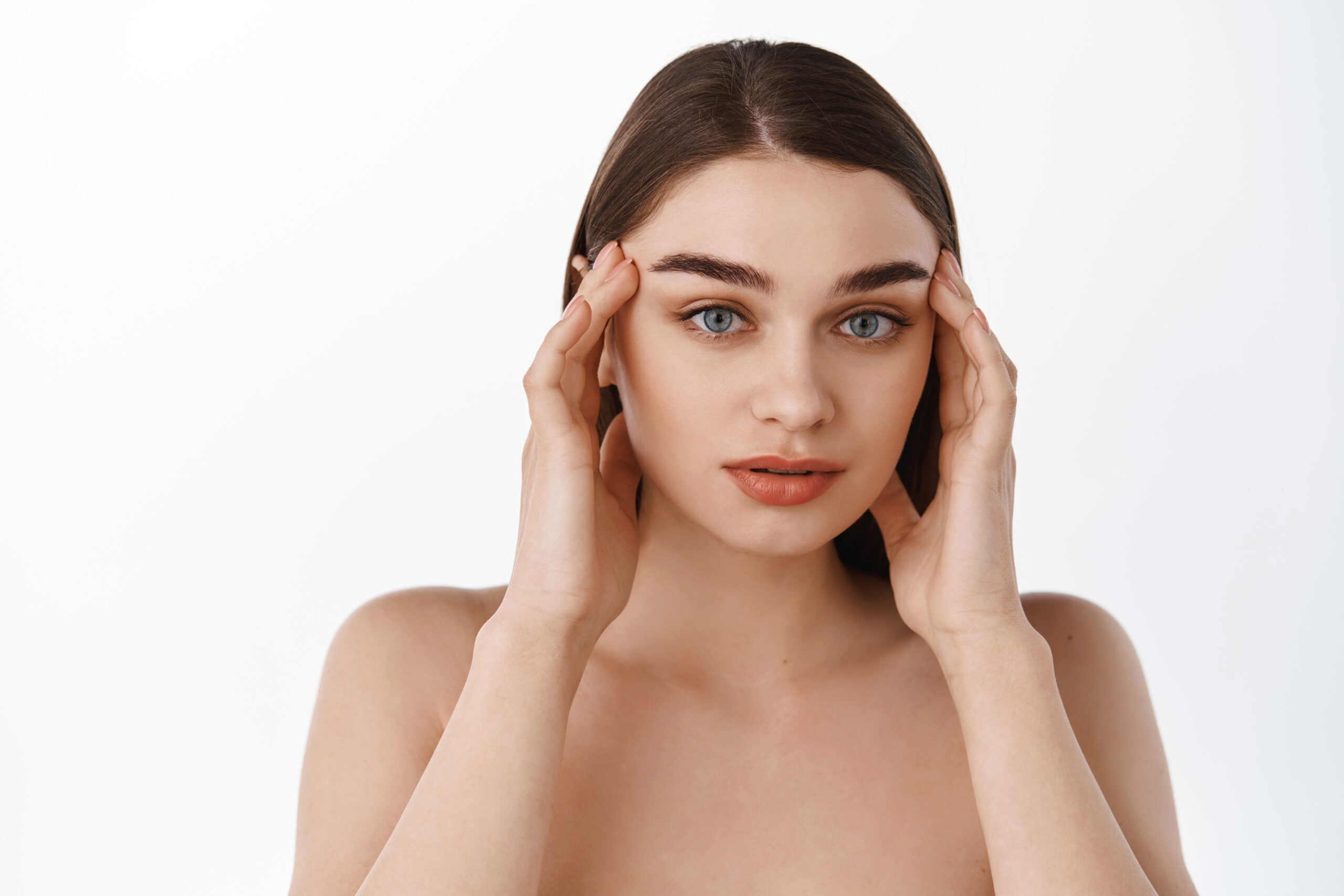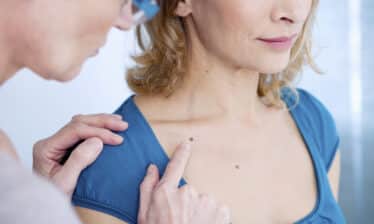Acne can be an isolating experience. It’s easy to feel like you’re the only one, or that it’s a single unsolvable problem. But there are many different types of acne, and millions who live with it.
As many as 50 million people in the U.S. have acne, including 85% of 12- to 24-year-olds. But it’s not just a problem for young people. As many as 15% of adult women have acne, and that number is increasing.
If you or your child has one of the many types of acne, here’s what you need to know.
What Is Acne?
Acne is the most common skin condition in the United States. It develops when oil and dead skin cells build up in the pores, clogging the hair follicles. Those hair follicles can eventually burst, causing more severe types of acne.
Acne usually develops on the face, back, chest, or shoulders, but you can get it anywhere on your body.
Top Acne Risk Factors
- Age. Acne is more common in teens and young adults due to an increase in reproductive hormones called androgens. These hormones stimulate the oil production that causes acne.
- Hormonal changes. Puberty tells the body to produce the androgens that cause acne. Hormone changes in pregnancy may have the same effect.
- Medications. Some drugs, including corticosteroids, can increase your risk of acne.
- Family history. If both your parents had or have acne, you’re more likely to develop it.
Acne is not the result of poor hygiene, though regularly cleansing your skin of oils can help to control breakouts.
“Junk food” also doesn’t cause acne, but breakouts can get worse if you have frequent blood sugar spikes. Reducing your intake of simple carbohydrates — white bread, cereal, sodas, and sugary snacks, for example —may make your acne less severe.
6 Types of Acne
Different types of acne call for different treatments. Here’s what you need to know before developing a skincare plan.
1. Papules (Pimples)
These red bumps are the stereotypical acne breakout. They develop when built-up oil and dead skin cells escape the hair follicle. This often happens when pressure causes the follicle walls to burst.
As the oil and debris spill into the nearby healthy skin, the immune system reacts. This causes the inflammation that gives pimples their telltale look.
2. Pustules
Pustules are essentially pimples that contain a yellowish-white fluid called pus. Pus is a collection of dead white blood cells that the body sends to fight potential infection — in this case, the oil and dead skin cells that create the pimple.
Pustules may have a yellow or yellow-white center, similar to a whitehead.
3. Whiteheads
Unlike bumps, which result from inflammation, whiteheads are “non-inflammatory” acne. They happen not because the pore closes from swelling but because it gets clogged and is sealed at the top.
Whiteheads look like raised white bumps on the skin. They usually don’t cause swelling or redness. If you have a white bump that’s significantly swollen underneath, it’s more likely a pustule.
4. Blackheads
Blackheads are also clogged unburst pores. But unlike whiteheads, they’re open at the top. The built-up skin cells and oils turn dark when exposed to oxygen.
5. Nodules
Nodules often look like pimples but develop deeper below the skin’s surface. They’re painful to the touch and feel hard when you press them.
Some are more visible because they turn red. Others are more subtle skin-colored lumps.
6. Cysts (Cystic Acne)
Like nodules, cystic acne develops deep below the skin and can be painful. They often develop on the jaw or back and may be soft to the touch, while nodules tend to be firm.
Cysts are softer due to a buildup of pus or fluid. It doesn’t mean they’re closer to “bursting,” so don’t try to pop them. They’re likely to leave a scar.
Acne Treatment Options
Acne is frustrating. It’s natural to want the lumps, bumps, and blackheads gone as soon as possible — sometimes by squeezing or popping breakouts.
It seems like everyone does it, but don’t give in to temptation. Squeezing any acne can spread debris and cause healthy pores to clog, making your acne worse. Squeezing can even cause permanent scarring, especially if nodules or cysts are involved.
Instead, focus on keeping your skin clean and using proven effective dermatological treatments. Here’s what works best for each type of acne.
Whiteheads and Blackheads
If you have these non-inflammatory acne types, your goal is to unclog the pores and prevent them from bursting. The American Academy of Dermatology (AAD) recommends washing with a benzoyl peroxide product and using a topical retinoid on the affected area.
Retinoids are vitamin A-based compounds that help unclog pores. The U.S. Food and Drug Administration has approved the topical retinoid adapalene for over-the-counter use.
Papules and Pustules
If you have inflamed pimples, wash the skin twice daily with a salicylic acid or benzoyl peroxide wash. You can also buy topical medications that use these ingredients.
Physicians may also recommend topical retinoids, antibiotics, or azelaic acid medications. Ask a medical professional what would work best for you.
Nodules and Cysts
These are the most difficult types of acne to treat. They typically don’t respond to over-the-counter treatments.
Dermatologists use the following treatments to relieve nodules and cystic acne:
- Topical antibiotics, often the initial treatment choice for severe acne
- Isotretinoin: A powerful prescription medication for treatment-resistant acne
- Low-dose oral prednisone, a potent corticosteroid appropriate for severe acne
Girls and women may also have the option of hormone-based treatment. This may involve an oral birth control pill and a medication called spironolactone.
Your doctor will consider your age, pregnancy status, and other health factors to choose your treatment.
Learning to Manage Your Acne
Regardless of the type of acne, a medical professional can help you figure out treatment. Keep your hands away from your face — fingers spread the oil. Keep your face clean, and your head held high.
Remember, more people have had acne than not. You’re far from alone, and clear skin is possible with the right treatment.






